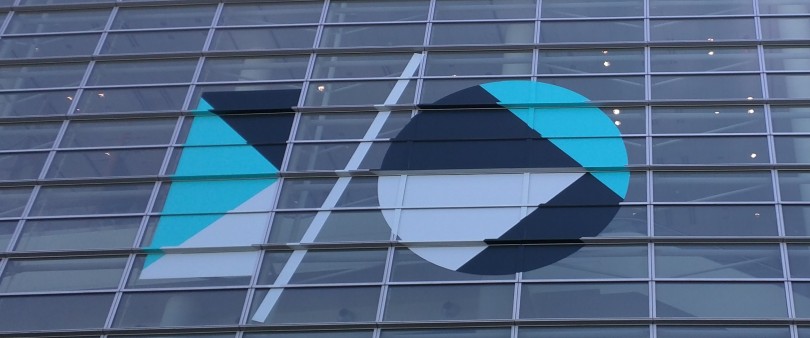aNewDomain — Google I/O 2015 developer conference is over, and it closed with a range of discussions regarding a myriad of Google products, including Android, Chrome, Play Services and other initiatives.
Developers hoped to leave I/O with the additional knowledge and tools to improve their existing products on Android and, while we know what tech pundits and journalist think of Google I/O 2015, what really matters is what the developers think.
Android M Leaps Forward
 I spoke to a number of developers who attended I/O, and everyone seemed optimistic about most of the items discussed for the world of Android. Android Lollipop has been a troublesome mobile operating system so far, which made it difficult for app developers to sustain great reviews of their apps. That means less downloads, and less revenue, which leads to less innovation.
I spoke to a number of developers who attended I/O, and everyone seemed optimistic about most of the items discussed for the world of Android. Android Lollipop has been a troublesome mobile operating system so far, which made it difficult for app developers to sustain great reviews of their apps. That means less downloads, and less revenue, which leads to less innovation.
Not all app crashing was Lollipop’s fault, but Android version 5.0-5.1 didn’t help app performance very much. Fortunately, Google claims to have squashed thousands of bugs with the Android M release. Yes, thousands! It’s nice to hear, but it will be better to see. I can’t wait.
Material design was a most-noticeable and, in my opinion, beautiful change that came with Android Lollipop. It helped disparate apps look unified, which makes a mobile OS feel connected, purposeful and consistent. But some things were just a little too consistent. Ever notice how some apps look insanely alike? When I asked I/O developers about material design, the majority said that while it was helpful, it also presented a serious challenge in terms of retaining company branding. The question then becomes: Is material design the reason users install an app, or is it the brand’s design?
Another major issue addressed at I/O was the data vulnerability that Android has struggled with in the past. Over the years, the dreaded permissions request prior to app installation opens many doors for intrusive apps. Why in the heck would anyone install a browser app that requires access to their phone’s contacts? Bollocks!
 Android M has finally standardized app permissions. This will give the consumer more control over what installed apps have access to, which makes developers excited because it allows their apps to be more trustworthy. A trustworthy app is an installed app, folks.
Android M has finally standardized app permissions. This will give the consumer more control over what installed apps have access to, which makes developers excited because it allows their apps to be more trustworthy. A trustworthy app is an installed app, folks.
Even with this feature in place, I still urge consumers to be mindful of mobile data security. Understand what you’re installing and what are the specific, realistic use cases. Be sure to only install from the Google Play Store, iTunes or Amazon App Store, as apps in those marketplaces are vetted for consumer safety.
What Happened to Android TV?
Android M, Chromecast, Android Wear and Android Pay were all covered extensively during the keynote presentation and within some additional sessions of I/O 2015. But what happened to Android TV? I remember the discussion of Android TV in the 2014 keynote and how excited I was. Unfortunately, it wasn’t featured much this year. The only real update was that HBO Now would be available for Android TV … but that was it.
The reality that inquiring developers and consumers want to know is, what’s going on with Android TV? Why wasn’t this covered more extensively? Apple dropped a bombshell by lowering the cost of its Apple TV device while adding the new HBO Now service, and Google didn’t blink. Is this a sign that Google has pushed the Android TV project aside to focus on other endeavors?
I mentioned in a chat with Attack of the Androids that Android TV has the opportunity to scoop up a huge market share as more and more smart televisions are sold every year. Google should simply beef up the interface and performance of Android TV to make it a decent competitor.
Google I/O 2015 wasn’t a big hit regarding innovation for mobile. The developers attending the event all seemed satisfied with the tools offered to make app development (and sales) easier. New tools are in place for developers to get past the woes of Lollipop, and Android Studio is littered with a huge number of libraries and dependencies to make great apps readily available.
Google, it seems, is zeroing in on a unified Android that will run across multiple platforms, all with the material design overlay. Yes, the developers will have to differentiate their own branding more seriously, but in the end the consumer will enjoy a more seamless experience. And this is what Google wants.
For aNewDomain, I’m Ant Pruitt.
Images in order: I/O Moscone image by Ant Pruitt; I/O Developers by Ant Pruitt; screenshot by Erik Finkenbiner














Android TV and it’s living room talk was indeed a huge disappointment. The presenters at the talk really seemed bummed out. Perhaps some of their demos or talks were cancelled at the last minute. I was really expecting much improved demos from last year, but there was much less to see and very little excitement.